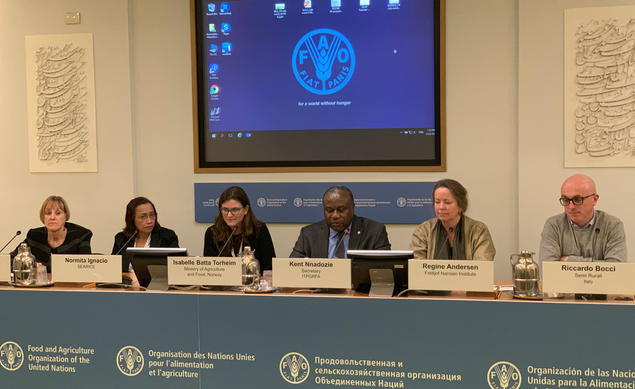Small but successful: Community seed banks are empowering local farmers
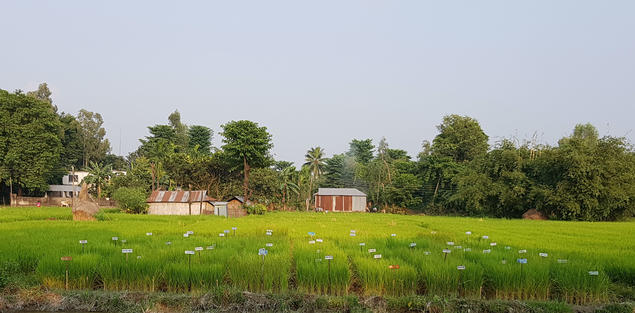
Local community seed banks may hold the key to solving some of our most pressing challenges with regard to biodiversity in agriculture, adaptation to climate change, food security and poverty alleviation.
These are among the findings from an evaluation project carried out by the FNI. The findings were presented at a side-event to the 17th session of the Commission on Genetic Resources for Food and Agriculture, which took place in Rome 18-22 February 2019.
 The Commission, a permanent intergovernmental body under the UN Food and Agriculture Organization (FAO), promotes the sustainable use and conservation of genetic resources for food and agriculture, as well as the fair and equitable sharing of benefits deriving from their use. FNI senior research fellow Regine Andersen participated as an expert in the Norwegian delegation to the session.
The Commission, a permanent intergovernmental body under the UN Food and Agriculture Organization (FAO), promotes the sustainable use and conservation of genetic resources for food and agriculture, as well as the fair and equitable sharing of benefits deriving from their use. FNI senior research fellow Regine Andersen participated as an expert in the Norwegian delegation to the session.
Adapting to climate change
The side-event, organized by the Norwegian Ministry of Agriculture and Food together with the governments of India, Italy and the Secretariat of the International Treaty on Plant Genetic Resources, took a closer look at Farmers’ Rights and the role of community seed banks (CSBs).
Related reading: What are Community Seed Banks?
Regine Andersen presented the findings from an evaluation of CSBs in Nepal and Ethiopia. The evaluation was commissioned and funded by the Development Fund, Norway, a development NGO that for many years has supported community-based agrobiodiversity programmes throughout Asia, Africa and Central America, together with local partners. The evaluation focuses at the impact of the established CSBs, two years after the end of donor support, and analyses the relevance and sustainability of the programmes.
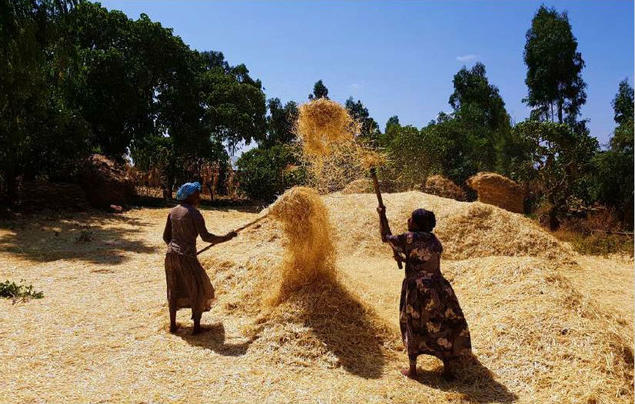
Promising results could be presented: In Nepal, the CSBs are continuously expanding their operations, two years after the end of project support. In Ethiopia, some help is still required, but the CSBs have developed impressive systems of adapting and developing local crops that are more resilient to the challenges of climate change. In both countries, the CSBs ensure the conservation and availability of local crop diversity, provide capacity-building for farmers and facilitate income-generating projects to further spur economic development.
Seeds for development
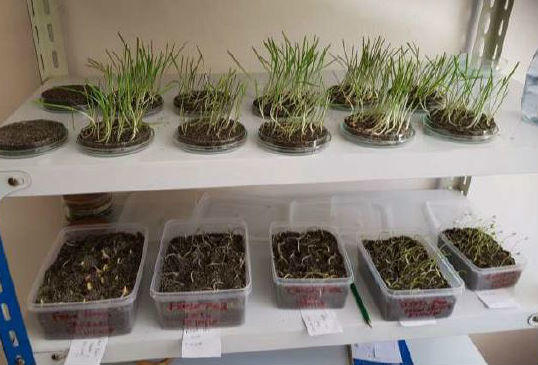 The broader impact is evident: improved seed and food security among the involved farmers, enhanced livelihoods enabling families to meet their household needs and sending children to school, and empowerment among farmers in general and women in particular.
The broader impact is evident: improved seed and food security among the involved farmers, enhanced livelihoods enabling families to meet their household needs and sending children to school, and empowerment among farmers in general and women in particular.
Partners in Nepal and Ethiopia were central in these achievements. Local Initiatives for Biodiversity, Research and Development (LI-BIRD) in Nepal and Ethio-Organic Seed Action (EOSA) in Ethiopia are both long-standing research and development NGOs engaged in community-based agrobiodiversity management. They have developed the models on which the community seed banks are based and facilitated the success.
See also: How Ethiopia got its grain back
Time to harvest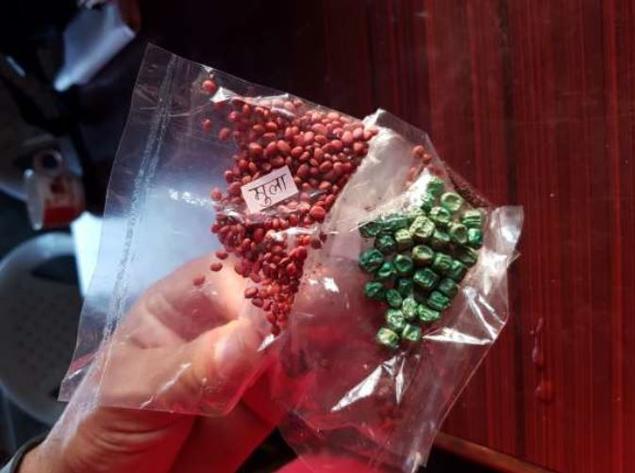
As pointed out by Andersen at the side event, CSBs serve as platforms for the realization of farmers’ rights: They facilitate sharing of traditional knowledge, sharing of benefits related to crop diversity, and farmers’ involvement in decision-making related to genetic resources. They also practice farmers’ rights to save, use, exchange and sell farm-saved seed.
The evaluated CSBs are functioning astonishingly well’, concludes Regine Andersen. ‘Development projects tend to fade out after the end of donor support, and many community seed banks have experienced the same destiny. Sustainability is a huge challenge’, she says. ‘It has taken many years for the partner organizations of the Development Fund to develop successful models. Now the long-standing work is fruiting. It is harvest time; time to identify ways and means for scaling out the experiences’, Andersen adds.
Models for success
So, how do we scale out such successful community-based agrobiodiversity management? Are CSBs like a ‘magic wand’ that instantly secure farmers’ rights and create more climate change-resilient food systems?
Well, at least we are seeing models of CSBs that are highly successful’, says Andersen. ‘Now, it is important to learn more and to derive the conditions for their success. CSBs are the missing links between national gene banks and farmers – they help facilitate access and benefit-sharing, and they promote active use and innovation. They also represent promising contributions to achieving the Sustainable Development Goals of ending hunger and poverty, through promoting seed and food security, strengthening family economies and empowering farmers to jointly seek solutions to their challenges’, adds Andersen.
Related reading: CSBs - hubs for growing genetic diversity
FNI contributes to breakthrough in negotiations under the Plant Treaty
